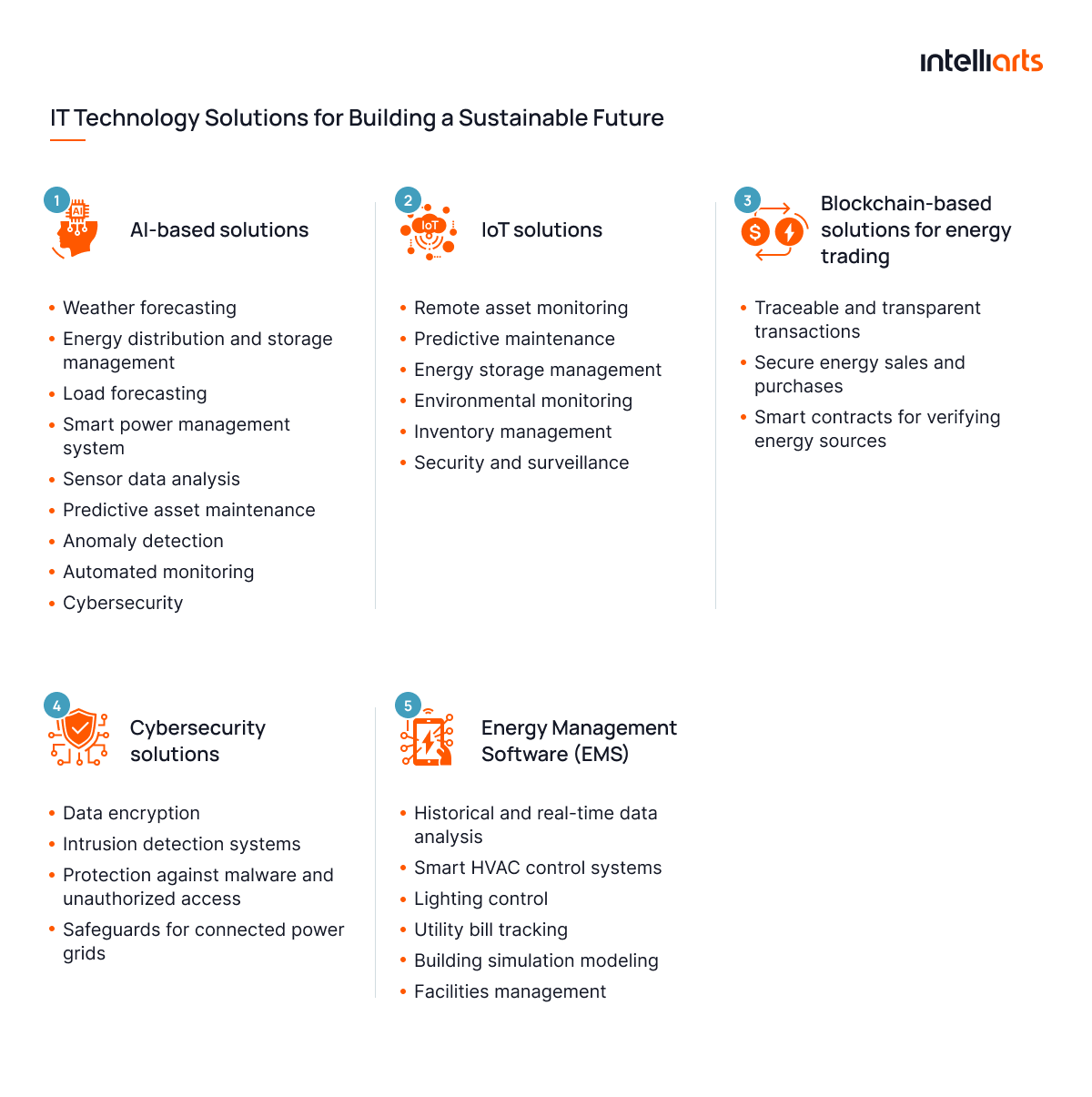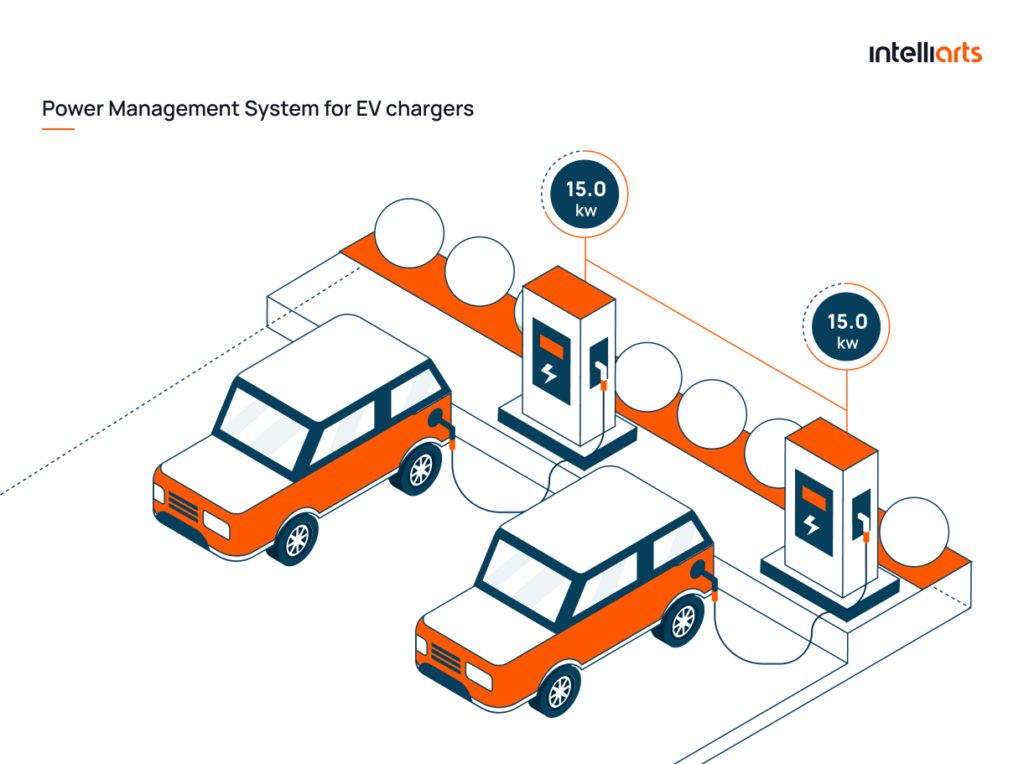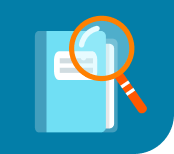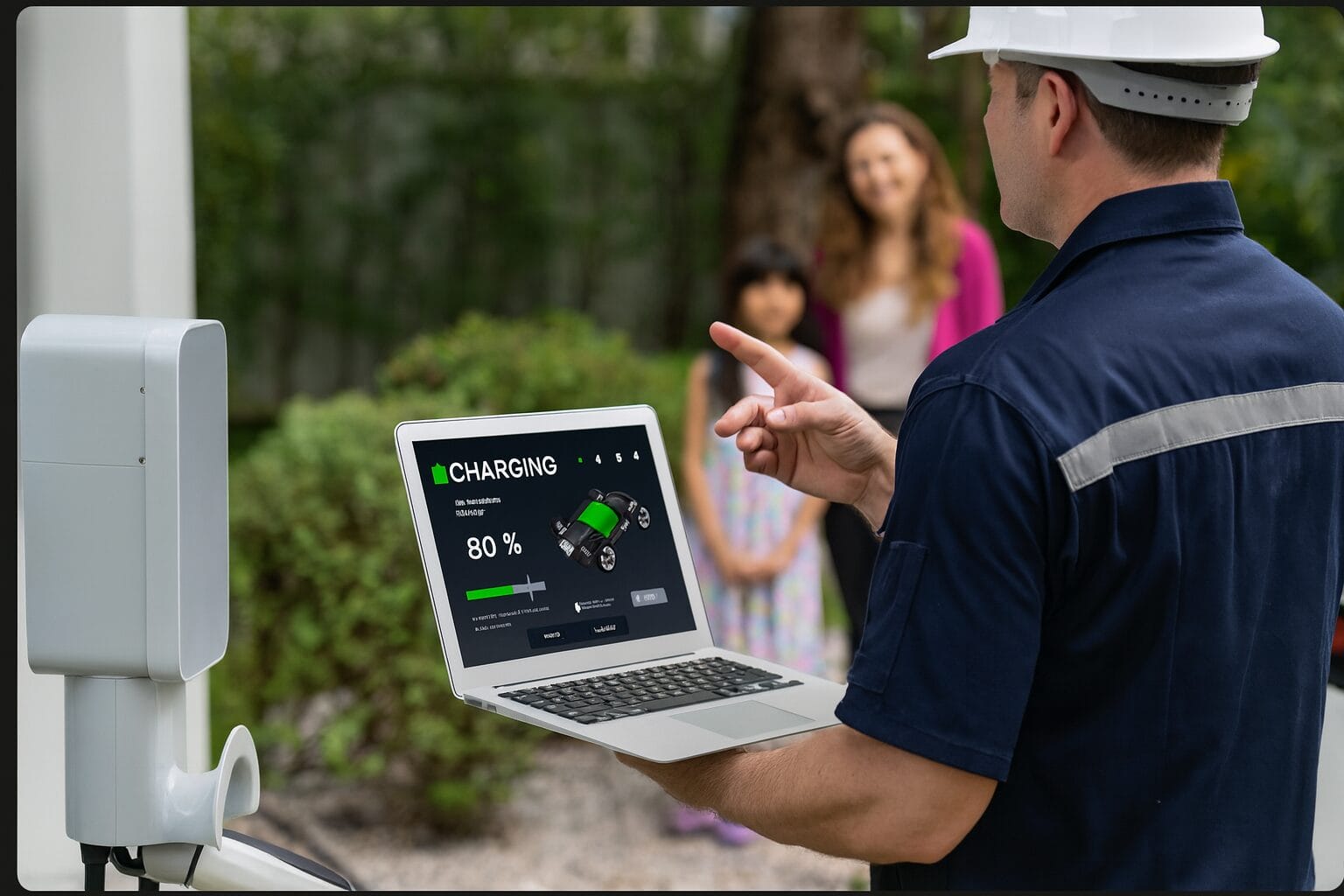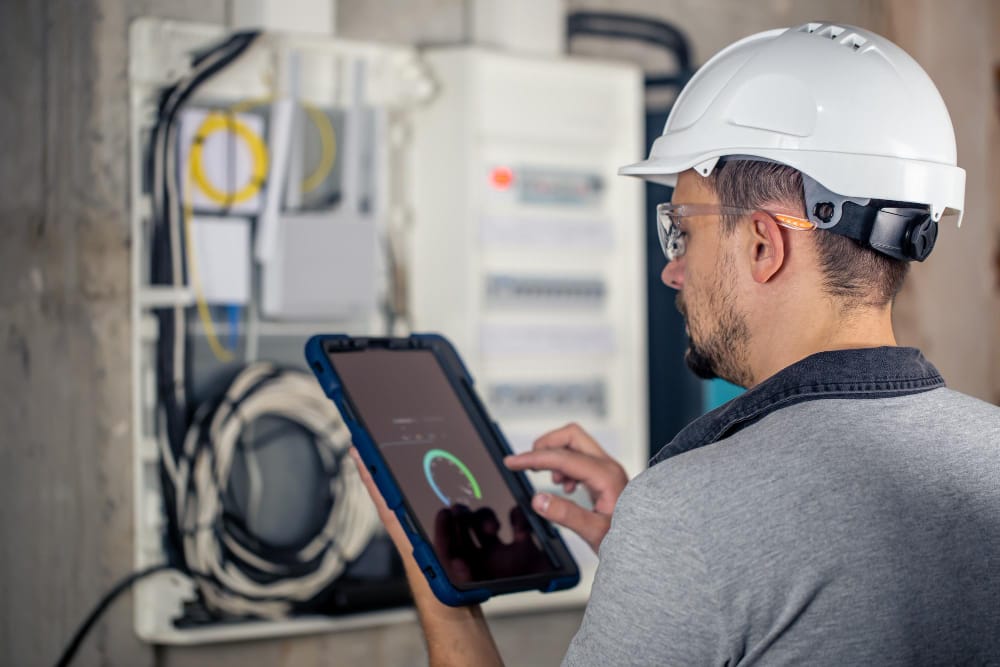Balancing the grid is one of the most important tasks related to energy management and renewable energy. After all, handling demand spikes ensuring the maximum efficiency of transportation and storing energy significantly contributes to the performance of all energy-centered systems.
Intelliarts is a trusted AI and ML development service provider with expertise in renewable energy and a member of the Norwegian-Ukrainian Chamber of Commerce (NUCC). Our vast pool of experience includes predictive maintenance, energy consumption optimization, EV management, and load balancing in renewable energy. We gladly our insights on how to drive digitalization in organizations.
In this post, you’ll discover the role, usefulness, and challenges of renewable grid balancing. Besides, you’ll explore how custom software can help build a sustainable future and review several related success stories.
Role of balancing the grid to overcome challenges of renewable energy
As mentioned, balancing the grid is a task that must be solved successfully to ensure the high performance of any energy system overall. Balancing the grid is also a solution to some sustainability and renewable energy challenges.
Common challenges of renewable energy include:
- Intermittency: Renewable energy sources like solar and wind are not always available because of regional specificities.
- Energy storage: Due to the intermittency of renewable sources, storing energy for times when production is low is critical. Unfortunately, current battery technology is expensive and has limitations in capacity and efficiency.
- High initial costs: The upfront costs for renewable energy projects, such as solar panels, wind turbines, and infrastructure, are relatively high compared to conventional energy sources.
- Land use and environmental impact: Large-scale renewable energy projects can require significant land and can have adverse impacts on local ecosystems and wildlife. For example, wind farms can affect bird populations, and hydroelectric projects can disrupt aquatic ecosystems.
- Grid integration: Integrating renewable energy into existing power grids can be challenging. The grid must be able to handle the variable nature of renewable energy and maintain stability and reliability.
- Resource location: The best locations for renewable energy production are often far from where the energy is needed. For instance, the windiest and sunniest places might be remote, requiring substantial investment in transmission infrastructure.
- Material scarcity: Renewable energy technologies rely on certain materials that are scarce or have a significant environmental footprint. For example, producing solar panels requires rare metals like cadmium and tellurium.
While many challenges require engineering solutions, there are ways in which software systems can help to address difficulties. Particularly, it concerns grid integration, storage, and efficiency of energy distribution and handling demand spikes. Here is the role of smart grid load balancing:
Accurate predictions and forecasting
Accurate predictions and forecasting allow better balancing of renewable energy sources with grid demand. This helps grid operators plan for fluctuations, ensuring a stable energy supply despite the variability of renewable sources like solar and wind.
Key elements:
- Historical data analysis
- Weather pattern analysis
- Machine learning algorithms
Energy storage solutions
Energy storage solutions are essential for managing the intermittent nature of renewable energy. These systems store excess energy produced during periods of high generation and release it when production is low or demand is high, optimizing load balancing and maintaining a consistent energy supply. Additionally, technologies like solar panel fault detection play a crucial role in ensuring that energy systems operate at peak efficiency, minimizing disruptions and energy loss.
Key elements:
- Battery storage
- Pumped hydro storage
- Thermal storage
Smart grid technologies
Smart grid and IoT smart grid technologies enhance the efficiency, reliability, and flexibility of the power grid. They utilize real-time data, automated controls, and advanced communication systems to monitor and manage electricity flow, improving grid stability and enabling effective load balancing.
Key elements:
- Real-time data monitoring
- Automated controls
- Advanced communication systems
Explore our data engineering consulting services to get expert support tailored to your needs.
Decentralized energy resources
Decentralized energy resources, such as rooftop solar panels and small wind turbines, generate power close to where it is consumed. This reduces transmission losses and enhances grid resilience, contributing to effective load balancing.
Key elements:
- Rooftop solar panels
- Small wind turbines
- Microgrids
Read also how implementing IoT in solar energy can help optimize energy production and distribution by providing real-time data and predictive analytics.
Advanced grid management
Advanced grid management uses sophisticated software and algorithms to optimize electricity distribution and usage. These systems balance supply and demand in real time, allocate resources efficiently, and manage the integration of renewable energy sources, ensuring stable grid operation.
Key elements:
- Real-time supply and demand balancing
- Resource allocation
- Integration management
Infrastructure upgrades
Modernizing grid infrastructure is necessary to handle the increased complexity and load variability introduced by renewable energy sources. Upgrades include reinforcing transmission lines, installing advanced metering infrastructure, and developing new interconnections to accommodate renewable energy.
Key elements:
- Transmission line reinforcement
- Advanced metering infrastructure
- New interconnections
Regulatory and policy support
Regulatory and policy support is vital for promoting renewable energy adoption and grid modernization. Governments can implement policies that incentivize the use of renewable energy, such as feed-in tariffs, tax credits, and renewable portfolio standards. Clear and supportive regulations ensure a stable investment environment and encourage the development of sustainable energy solutions.
Key elements:
- Incentive policies
- Regulatory frameworks
- Investment stability
In essence, load balancing optimization is what powers-up energy systems, potentially enabling humanity to rely fully on renewable energy sources only.
2026 market overview and industry insights of balancing the grid
The global smart grid market shows some remarkable results. Take a look at the infographic below that reveals key statistics and trends for the industry:
As it can be observed, governments dictate the need to cut CO2 emissions and increase the adoption of renewable energy. Since renewable energy grid management allows to get the most efficiency out of any renewable energy system, the value of this technology is already well-recognized on the global level.
The perspective of the Intelliarts team is that renewable energy grid management is about to become a must-have software part of any energy solution that will be implemented in the future. And, what’s most important is that AI is intended to be an integral part of any smart load balance system. Multiple studies have researched the possibility of combining cloud and software-defined networking (SDN) solutions with AI with the prospect of creating advanced load balancing approaches that can be implemented worldwide.
In the next post sections, we’ll review other custom software solutions that can contribute to renewable energy and other sustainability systems.
How custom software may be helpful for a sustainable future
When talking about Earth’s sustainability, i.e., the ability of the planet to support itself and its inhabitants, major concerns arise. Due to both natural causes and human activity, processes in entire ecosystems slowly deteriorate. Among the existing sustainability challenges, according to research, are:
- Climate change
- Resource depletion
- Biodiversity loss
- Pollution
- Waste management
- Energy transition
- Sustainable agriculture
- Urbanization
- Water scarcity
- Food security
Load balancing is one of the most significant ways to apply custom software development to solve sustainability issues. However, the potential of renewable energy software development reaches far beyond this single application. Here are ways in which different IT technology solutions can contribute to building a sustainable future:
#1 AI-based solutions:
- Weather forecasting
- Energy distribution and storage management
- Load forecasting
- Smart power management system
- Sensor data analysis
- Predictive asset maintenance
- Anomaly detection
- Automated monitoring
- Cybersecurity
You can discover more about Artificial Intelligence in the energy market from another blog post by Intelliarts.
#2 IoT Solutions:
- Remote asset monitoring
- Predictive maintenance
- Energy storage management
- Environmental monitoring
- Inventory management
- Security and surveillance
#3 Blockchain-based solutions for energy trading:
- Traceable and transparent transactions
- Secure energy sales and purchases
- Smart contracts for verifying energy sources
#4 Cybersecurity solutions:
- Data encryption
- Intrusion detection systems
- Protection against malware and unauthorized access
- Safeguards for connected power grids
#5 Energy Management Software (EMS):
- Historical and real-time data analysis
- Smart HVAC control systems
- Lighting control
- Utility bill tracking
- Building simulation modeling
- Facilities management
Creating a sustainable future boils down to making incremental changes but in a multitude of ways. As development service providers, we ought to power up sustainability projects with all the digital technologies they need to revert the destructive processes the Earth undergoes at the physical level. — Oleksandr Stefanovskyi, ML Development Team Lead at Intelliarts
Load balancing and energy management cases of Intelliarts
Let’s take a look at several energy management cases that the Intelliarts team delivered:
Creating next-gen EV fleet management software
The customer, who is an EV charging company, reached out to Intelliarts for assistance with developing an enterprise-level solution for managing EV vehicles. It was intended to help keep track of the EV fleet and the efficiency of charging.
We delivered the management software with data analytics and telematics capabilities integrated. The ready solution enables smart energy management, shows EV charging status, and provides predictions.
EV fleet management software by Intelliarts provided the customer with greater operational efficiency, charging flexibility, read-time, and data analytics and helped minimize spending.
Explore EV fleet management software success story.
Smart power management system for energy consumption optimization
The Intelliarts customer, a supplier of EV charging solutions, reached out to us with the request to optimize the energy consumption of EV chargers. The goals were to mitigate the effects of climate change and maximize the cost-efficiency of stations.
To address the customer’s needs, we created a power management system that helps users schedule power limits for any time period for one or more stations. The software includes data analytics capabilities, supports API integration, and provides off-peak charging and random delay capabilities.
The resulting solution helped to achieve the optimized use of energy as well as cost-efficiency in the long run. Besides, it facilitates the longevity of electrical infrastructure and helps to provide higher quality service to end users.
Explore smart power management system success story.
Predictive maintenance solution for EV Connect
A provider of EV charging solutions reached out to us with the request to build a predictive maintenance solution. The software was intended to predict and prevent failures of their charging stations and address the problem of repeated downtimes.
We approached this case by leveraging EV charging analytics to conduct a detailed analysis of historical data from chargers. We also conducted data anomaly analysis and transformed raw data from log recorded into a structured format. Finally, we created an ML predictive maintenance algorithm.
The resulting solution provided EV Connect with a range of business insights into the behavior of EV charging stations, usage patterns, and system performance. We also provided recommendations for collecting, processing, and storing raw data for facilitating further predictive maintenance activities with the created ML algorithm.
Explore the predictive maintenance success story.
Final take
Effective grid balancing is one of the components of renewable energy systems which plays a notable part in ensuring a sustainable energy future. Custom IoT solutions, along with AI and smart grid technologies, help address key challenges like intermittency, storage, and system integration.
Looking for a software partner in renewable energy? Request assistance from the Intelliarts team of AI and ML engineers. With more than 25 years of experience in the market delivering tailored software solutions, we can address your software needs with flying colors.
FAQ
1. What are the main challenges of load balancing in renewable energy?
The main challenges include variability in power generation due to weather conditions, integrating diverse energy sources, maintaining grid stability, forecasting demand accurately, and managing energy storage effectively.
2. How does your company approach load-balancing projects?
The Intelliarts company approaches load-balancing projects by first conducting a thorough assessment of the energy needs and renewable energy sources available. We then design a tailored solution that integrates advanced grid management systems, energy storage, and smart grid technologies. Our team ensures continuous monitoring and optimization, using predictive analytics to manage variability and maintain grid stability.
3. Can you provide examples of successful load-balancing projects?
Yes, the Intelliarts team successfully delivered a smart power-management system as well as two other energy-related projects — an EV fleet management solution and predictive maintenance for EV chargers.






